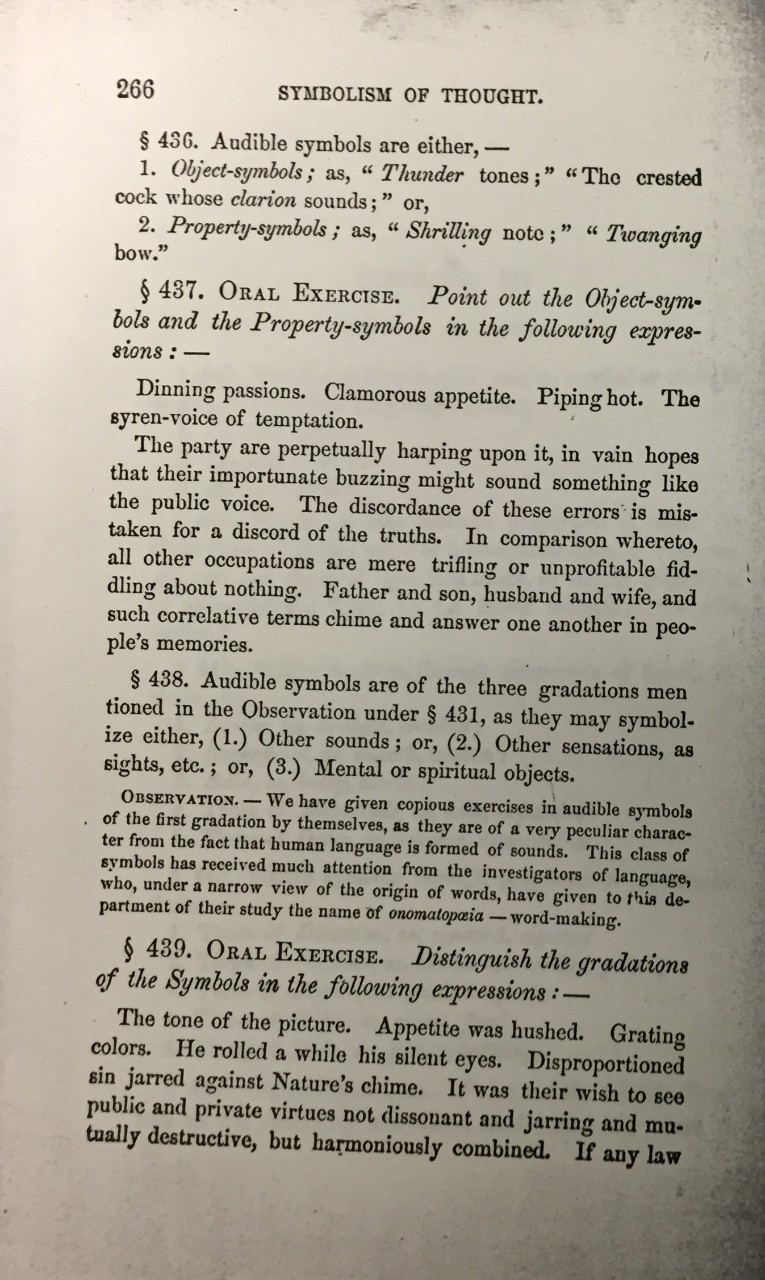The Lucille M. Schultz Archive

In the summer of 2015, UC English Emerita Professor Lucille M. Schultz donated to the University of Cincinnati’s Department of English & Comparative Literature her archive of 19th-century composition and rhetoric textbooks and handbooks, and several sets of student papers and letters from the same period. Professor Schultz collected these materials during her 26-year career as a scholar of rhetoric and composition at UC.
Professor Schultz made high-quality photocopies of the included materials from 15 libraries and archives around the country, primarily from collections at the Library of Congress and at Harvard University’s Monroe C. Gutman Library. She published a number of articles based on the collection and two scholarly monographs—The Young Composers: Composition’s Beginnings in Nineteenth-Century Schools (1999), the first full-length history of school-based writing instruction, and the co-written, with Jean Ferguson Carr and Stephen L. Carr, Archives of Instruction: Nineteenth-Century Rhetorics, Readers, and Composition Books in the United States. The latter was awarded the MLA’s 2005 Mina P. Shaughnessy Prize, “presented for an outstanding scholarly book in the fields of language, culture, literacy, and literature that has a strong application to the teaching of English.” Schultz, who spent nearly ten years locating the materials included in the archive, believes her collection includes all extant 19th-century school-based composition books that are publicly available. The archive, however, does not contain every edition of every book.

The Schultz archive provides a thorough vision of composition practices in 19th-century U.S. schools. With 257 entries representing the period from 1785 to 1916, the collection includes, among other artifacts, picture books for early primary school students, 103 grammar handbooks, and advanced rhetoric textbooks for college students. The materials highlight practices we would today identify as prewriting, freewriting, object-oriented pedagogy, student-centered activities, and multimodal composing. Including lessons, student examples, and images, the texts provide glimpses into 19th-century lives, material cultures, and pedagogical practices. The archive also helps readers understand the socially conservative nature of textbooks: great attention is paid to Christopher Columbus, for example; "demon rum" is seen as an evil, resulting in poverty; and slavery gets no mention. In thus putting a lens on the past, the archive invites reader to reexamine the present.

In addition, the Schultz archive provides a complex backdrop to the origins of rhetoric and composition and to the formation of literacy instruction in the U.S. For example, included texts offer a variety of references to the cultural implications of composition instruction. These cultural components are represented through discussions of cultural assimilation, cultural separation/distinction, religion and the acquisition of “high” culture. In one salient example, George Thompson, in Letters to Sabbath-School Children on Africa (1855), writes about composition instruction as taught by American missionaries to children in Africa. Much of this text addresses the superiority of the English language and the necessity of teaching children to use it properly. Thompson’s text effectively demonstrates cultural assimilation practices as they relate to nonnative English speakers. The practice of cultural assimilation through language also emerges in David Blair’s The Universal Preceptor: Being a General Grammar of Arts, Sciences, and Useful Knowledge (1826), which argues for the exclusion of borrowed words and idiomatic expressions in an effort to purify the English language.

UC English Emerita Professor Lucille M. Schultz
As this snapshot of the archive suggests, the included materials provide a foundation for fruitful research that could examine contemporaneous documents, laws and historical events that have contributed to the assimilation of native and immigrant cultures in the U.S. during the 19th-century (and beyond). The texts invite comparison to contemporary rhetorics related to English-only laws and educational practices, as well as the continued suppression of nondominant languages and cultures within U.S. literacy education. And this is only the beginning. Scholars may also be interested in the archive to study student writing, teacher response methods, classroom conditions and materials, and many other subjects that pertain to literacy instruction during the 19th-century.
Since 2015, graduate students in rhetoric and composition at UC have begun using it as a resource for research projects. Two years later, with assistance from the Taft Research Center and the UC library archivists, the resulting online database is available to scholars across the country and around the world, making possible wide public access to a collection of materials otherwise unavailable in a single archive. Please access the Schultz archive and take a look around!
Those interested in browsing the print copies of the Schultz archive, currently housed in 110 Arts & Sciences Hall, please contact Professor Russel Durst at russel.durst@uc.edu to set up an appointment. To access a complementary 19th-century collection of schoolbooks, visit the Nietz Old Textbook Collection housed at the University of Pittsburgh.
Those interested in browsing the print copies of the Schultz archive, currently housed in 110 Arts & Sciences Hall, please contact Professor Russel Durst at russel.durst@uc.edu to set up an appointment.